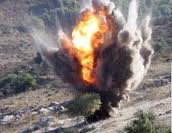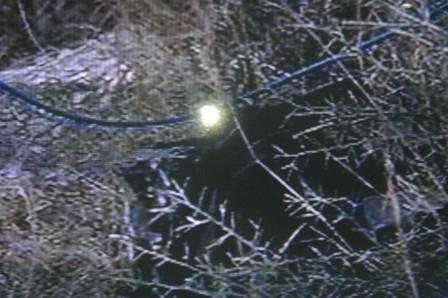UN documentary highlights persistent threat of cluster bombs
Source: Daily Star, 22-11-2006
BEIRUT: The United Nations Integrated Regional Information Networks (IRIN) released a short documentary this week on cluster bombs in South Lebanon and their effect on residents as a result of the July-August war with "Israel". In addition to its regular news reports, IRIN also produces audio-visual material and created a film unit in 2004 to raise awareness about issues that tend to be overlooked by the mainstream media.
The documentary, entitled "Fields of Fire" and produced by David Gough and Salma Zulfiqar, begins with a brief history of cluster bombs, which were originally manufactured by Germany toward the end of World War II. It explains how they were engineered by nations around the world to each their own specifications, and how they are being used today as conventional weapons of warfare.
Though only 12 minutes long, the film, which is available in digital formats online, is powerful in its impact. The director interviews both professional de-miners and victims of left-over cluster bombs. Frederic Gras, a member of the Mines Advisory Group, explains to the audience how cluster bombs are literally everywhere, as 30 percent of those that land do not explode immediately on impact, leaving them to explode later when touched or played with by unsuspecting victims.
Other information covered by the film includes the fact that 90 percent of the cluster bombs dropped on South Lebanon came in the last 72 hours of the war, when a cessation of hostilities had already been brokered and was within hours of being implemented. This, of course, leaves the audience to wonder about the ultimate objectives of the "Israeli"s. According to the documentary, which was shot last month, there are approximately 1 million unexploded cluster bombs lying around the South, and around 150 people so far have either been killed or critically injured as a result.
To the director, 10-year-old Hassan shows a scar running down his chest toward his abdomen, a reminder of a cluster bomb he encountered while playing, which ripped his torso open and caused his intestines to fall out. Lucky to be alive, he now dedicates his time to educating other children about the perils of cluster bombs.
"Fields of Fire" also points out how cluster bombs have a direct impact on the livelihoods of those living in the South. Many farmers have to choose between the "safe" option of staying away from their crops, and thus their income, until they are declared clear of cluster bombs, or the "risky" option of picking their way through the bomblets in order to gather their crops to sustain some sort of living wage.
While the United Nations and other groups affiliated with the de-mining initiative have made a concerted effort to work their way through the South in order to detonate and gather the cluster bombs, some farmers find the pace they are working at too slow, and have taken to hiring so-called expert cluster bomb collectors to de-mine their fields - at a rate of $3 a bomb. According to the documentary, it won`t be until the end of 2007 that all the cluster bombs will be cleared from the South.
"Fields of Fire" is available on the IRIN website, www.irinnews.org
- Related News



